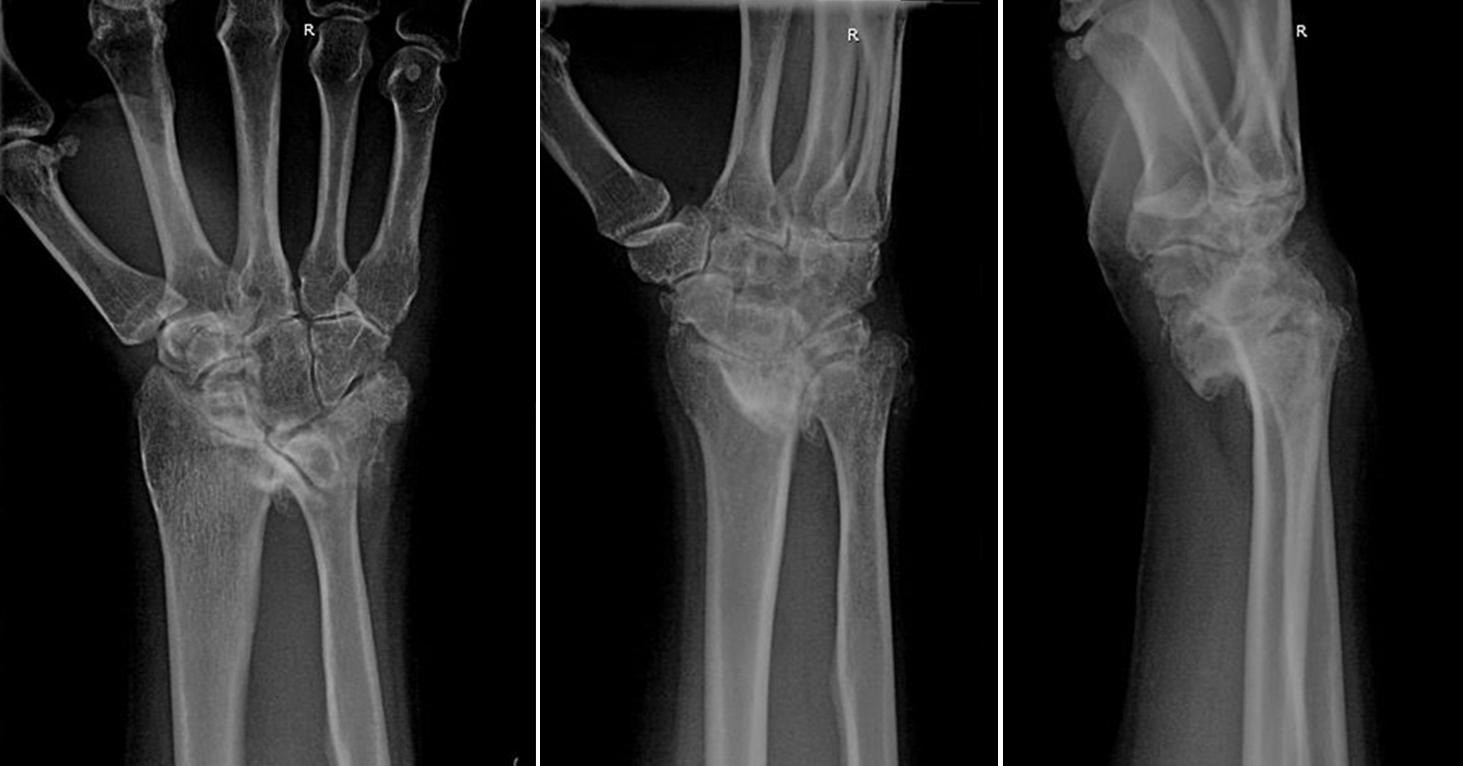Physical Address
304 North Cardinal St.
Dorchester Center, MA 02124
Total wrist arthroplasty (TWA) is indicated in low-demand patients with severe wrist pain who require some motion. Potential candidates include patients with osteoarthritis (OA), posttraumatic arthritis, and sometimes rheumatoid arthritis (RA).
Although new implant designs show promise, TWA is fraught with complications including stiffness, infection, tendon attenuation, and hardware loosening, dislocation, or failure. Fastidious precision is mandatory in placing the current implant design because of the multiple steps in inserting the implant.
Pain relief after TWA is typically inferior to wrist fusion, and few patients achieve functional wrist motion postoperatively.
The patient must understand the risks and benefits of TWA and must commit to a lifetime of restricted activities imposed by having an artificial wrist.
Young or active patients with high-demand occupations or activities (sports, farming, manual labor, etc.)
Poor bone stock caused by osteopenia, osteoporosis, or rheumatoid disease
Poor skin or soft tissue quality
Tendon imbalance or spasticity that would limit postoperative mobility or create abnormal joint loading
Prior wrist infections or infected hardware
Elicit a detailed history of the patient’s functional demands, activities, occupation, hobbies, and home circumstances. High-demand activities hasten implant failure.
The hand and wrist are inspected for previous scars, erythema, swelling, and deformity. Signs of active inflammatory disease or infection may be a contraindication to wrist replacement.
Finger, wrist, and forearm range of motion (ROM) are assessed. Any contracture or spasticity should be identified preoperatively; imbalance of forces about the wrist can cause abnormal loading of the implant.
The carpus and distal radioulnar joint (DRUJ) are examined for subluxation and dislocation, which suggest inherent wrist instability.
RA patients are prone to tendon and soft tissue imbalances and must be examined carefully. Evaluate the quality of the skin and the capacity for wound healing after implant placement. Systemic therapy for rheumatoid disease must be optimized before surgery.
Patients are immobilized in a wrist splint and instructed to wear it full time for a trial period. Arthroplasty is considered for those who find immobilization intolerable.
Standard three-view wrist radiographs are mandatory to determine the extent of wrist destruction. If there is well-preserved bone stock and most of the carpal joints are severely affected ( Fig. 52.1 ), then total wrist arthroplasty is an option.

Computed tomography (CT) scan or wrist arthroscopy are indicated when the extent of intercarpal or radiocarpal arthrosis is unclear.
When the radiocarpal or intercarpal joints are spared, other options, such as proximal row carpectomy or four-corner fusion (see Chapter 27 Salvage Procedures for Scaphoid Nonunion), is preferable to total wrist arthroplasty or arthrodesis.
Rheumatoid wrists should be evaluated with great care; radiographs may not show the true extent of arthrosis or osteopenia. In RA patients with radiocarpal arthritis without midcarpal joint involvement, radiolunate or radioscapholunate fusion can be considered to maintain some motion.
Implant size can be estimated from preoperative wrist radiographs.
The implant described in this chapter is the Integra Freedom Wrist Arthroplasty System. The design consists of components to replace the distal radius and the proximal carpal row. The radial component has a stem that is inserted into the intramedullary canal. The carpal component consists of a titanium plate that is fixed into the carpal bones with a central peg and two screws. A convex ultra-high-molecular-weight polyethylene (UHMWPE) bearing is locked onto the carpal plate and articulates with the concave surface of the distal radial component.
The carpal component is fixated with two variable-angle screws, and a central stem is inserted into the capitate. Screws are passed through the scaphoid, trapezoid, and second carpometacarpal (CMC) joint radially and through the hamate ulnarly. The ulnar screw should not be passed through the mobile fourth or fifth CMC joints. The radial component articular surface is inclined 40 degrees to give the option to preserve the ulna head.
Older implants with ball-and-socket or hinge designs are prone to wrist imbalance and implant dislocation postoperatively. Newer designs use a broad articulation to reduce these risks.
Become a Clinical Tree membership for Full access and enjoy Unlimited articles
If you are a member. Log in here